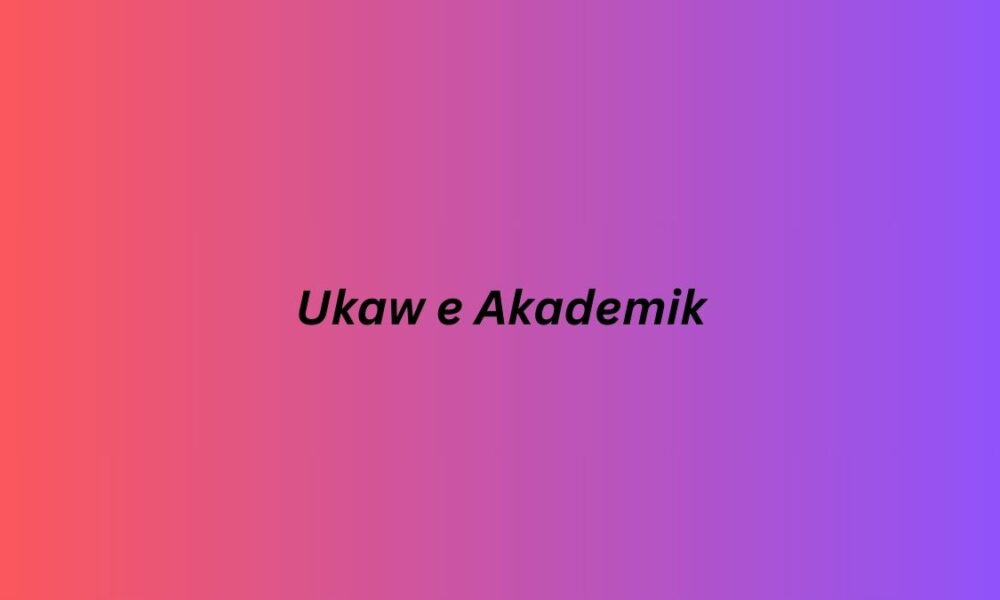Writing for academic purposes is a vital component of learning, influencing how students present their concepts and discoveries. The phrase “Ukaw e Akademik” describes a novel strategy intended to improve academic writing by tackling typical problems and bringing creativity into the process.
Understanding Academic Writing
In its purest form, academic writing is the formal, systematic articulation of ideas in a clear, succinct, and ordered manner. It includes a range of formats, including research papers, essays, and dissertations. Appropriate citation of sources, coherent paragraphs, and a distinct thesis statement are essential elements of academic writing.
Challenges Faced in Academic Writing
Students frequently run into difficulties when they write for academic purposes. These could include anything from writer’s block to trouble organizing intricate concepts. Getting past these obstacles is essential to writing scholarly articles of the highest calibre.
Exploring the “Ukaw e Akademik” Approach
An innovative viewpoint on academic writing is presented by the “ukaw e akademik” method. It inspires writers to think creatively and beyond the boundaries of traditional formal writing. This strategy seeks to increase the enjoyment and engagement of academic writing by accomplishing this.
Benefits of Adopting “Ukaw e Akademik”
Utilizing the “ukaw e akademik” method has several benefits. Writing has much-increased coherence and clarity, which makes concepts presented more engagingly. Consequently, this raises the standard of scholarly articles as a whole.
Practical Tips for Implementing “Ukaw e Akademik”
A step-by-step guide can be followed by writers to effectively use the “ukaw e akademik” approach. Adding creative features to academic writing, including vivid examples and engaging tales, can improve enjoyment and reader appeal.
Perplexity in Academic Writing
Adding ambiguity and complexity to academic papers is one way to make them seem more confusing. This gives the narrative more depth while also testing the reader’s intelligence. One way to achieve bewilderment is to explore different viewpoints and ask provocative questions.
Burstiness: Adding Life to Academic Writing
The term “burstiness” describes the process of giving academic writing vigor and vibrancy. Writers can add vibrancy to their work by utilizing dynamic language, varying sentence structures, and captivating tales, all while preserving specificity and context.
Maintaining Specificity and Context
Maintaining the relevance of the message and preventing misunderstanding require striking a balance between burstiness and ambiguity. It is the goal of writers to give thorough justifications without compromising on clarity, making sure that their concepts are firmly rooted in the academic setting.
Engaging Readers Through Detailed Paragraphs
Well-written paragraphs are essential for keeping readers interested. Writers can make sure that their audience understands the nuances of the subject matter by providing thorough explanations and examples.
Conversational Style in Academic Writing
Using a conversational style in academic writing can help readers understand complicated concepts more easily. There is a feeling of intimacy between the writer and the reader when personal pronouns are used and the audience is addressed directly.
Active Voice and Its Significance
Sentences in academic writing gain strength and clarity when the active voice is used. Through precise attribution of actions to their topics, authors can develop a communication style that is more impactful and direct.
Brief Yet Comprehensive Writing
In academic writing, striking a balance between thoroughness and brevity is a necessary ability. Writers should strive to communicate difficult concepts succinctly without compromising the essential nuance and complexity.
Rhetorical Questions in Academic Writing
By posing rhetorical questions, authors encourage readers to consider the material and engage in critical thought. Strategic use of rhetorical questions can raise audience participation levels.
Analogies and Metaphors: Making Concepts Accessible
By posing rhetorical questions, authors encourage readers to consider the material and engage in critical thought. Strategic use of rhetorical questions can raise audience participation levels.
Conclusion
Finally, implementing the “ukaw e akademik” method can revolutionize the experience of writing for academic purposes. Writing interesting and captivating papers that attract their readers may be achieved by writers by tackling obstacles, embracing innovation, and striking a balance between confusion and burstiness.
FAQs
How can I overcome writer’s block in academic writing?
Experiment with the “ukaw e akademik” approach, incorporating creative elements to stimulate your writing.
Is it advisable to use a conversational style in all types of academic writing?
While a conversational style can enhance engagement, it’s essential to consider the formality requirements of the specific academic genre.
What are some practical tips for maintaining specificity in complex topics?
Use detailed examples, provide thorough explanations, and utilize analogies to make complex concepts more tangible.
Can I use burstiness without compromising the formality of academic writing?
Yes, by incorporating dynamic language, varied sentence structures, and engaging anecdotes, you can add burstiness while maintaining formality.
How can I ensure that my academic writing remains relevant to the intended audience?
Keep a clear focus on the academic context, avoiding unnecessary complexity, and ensuring that your content aligns with the expectations of your audience.











